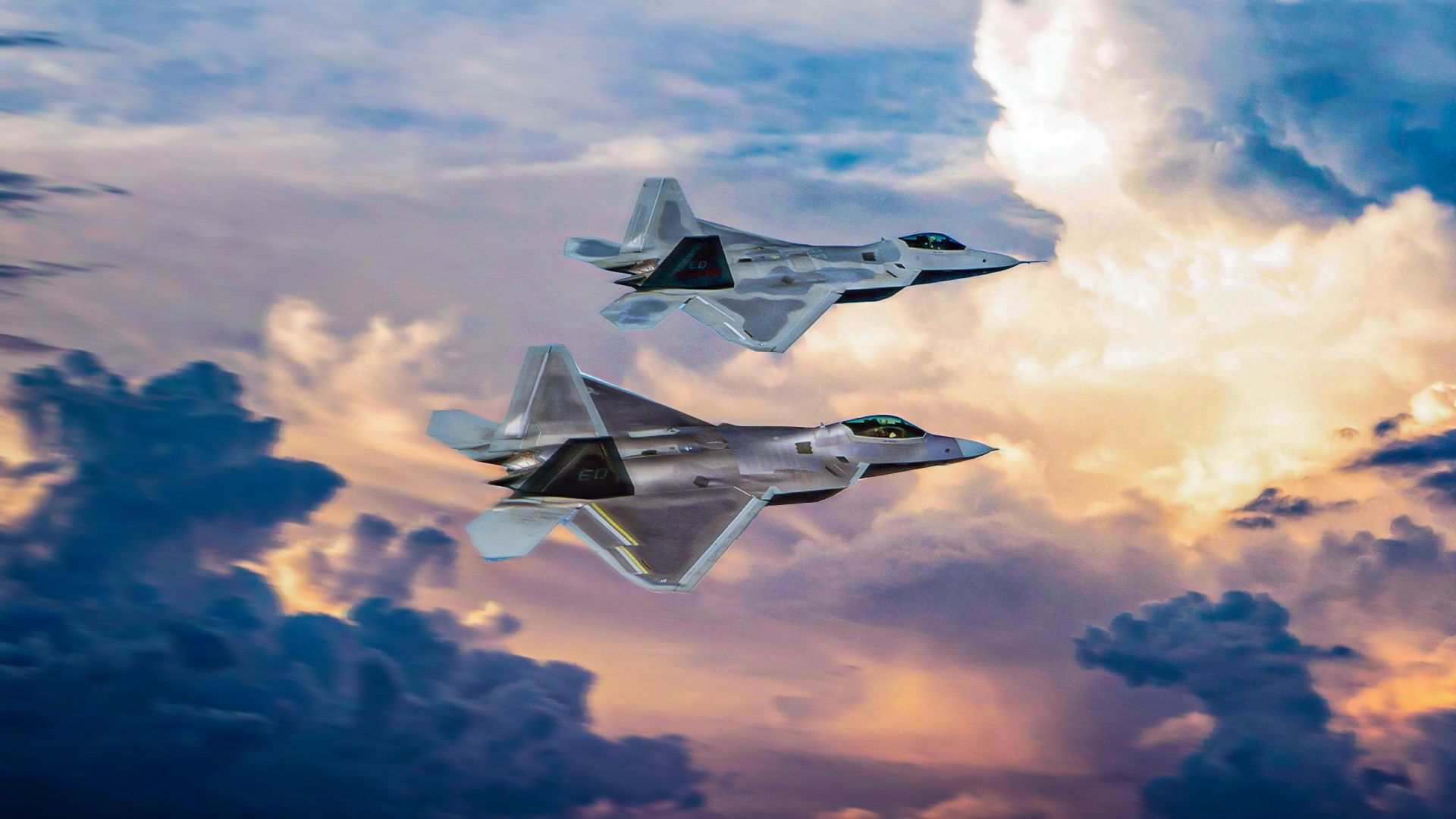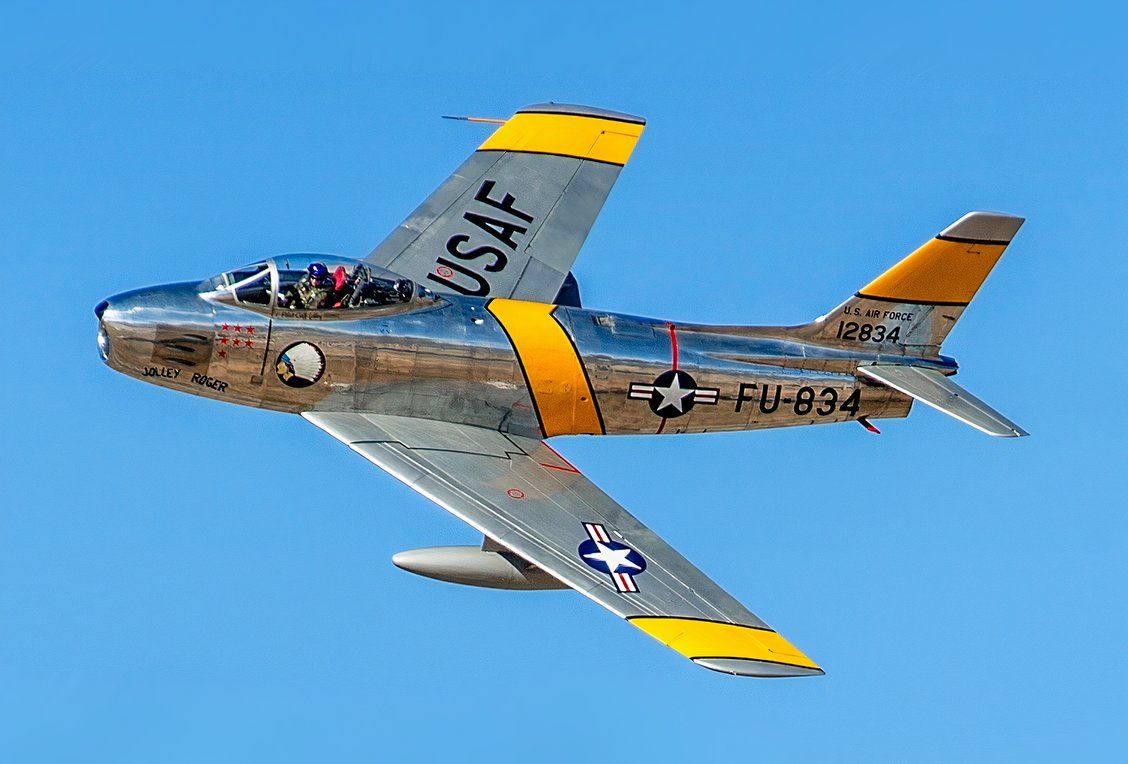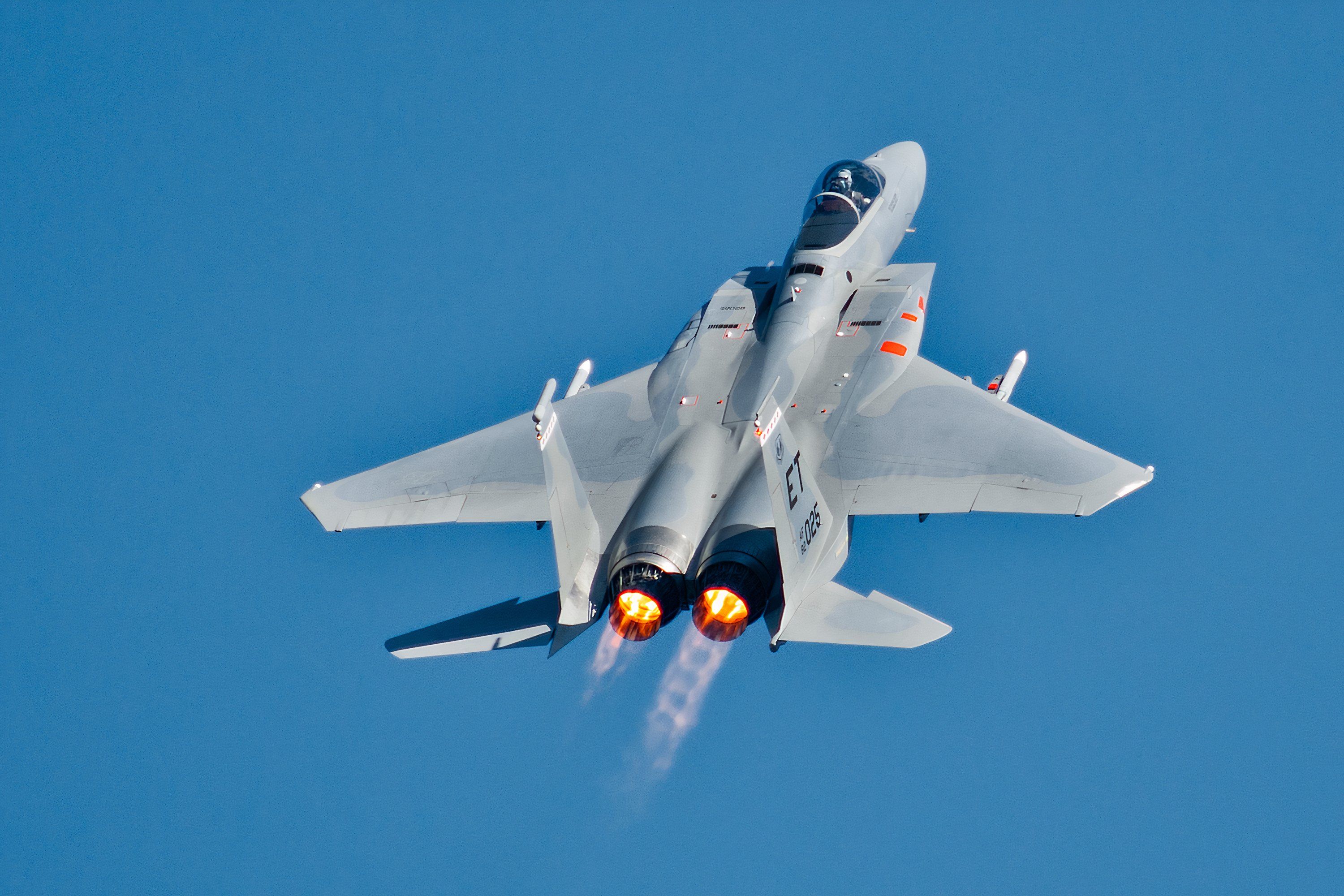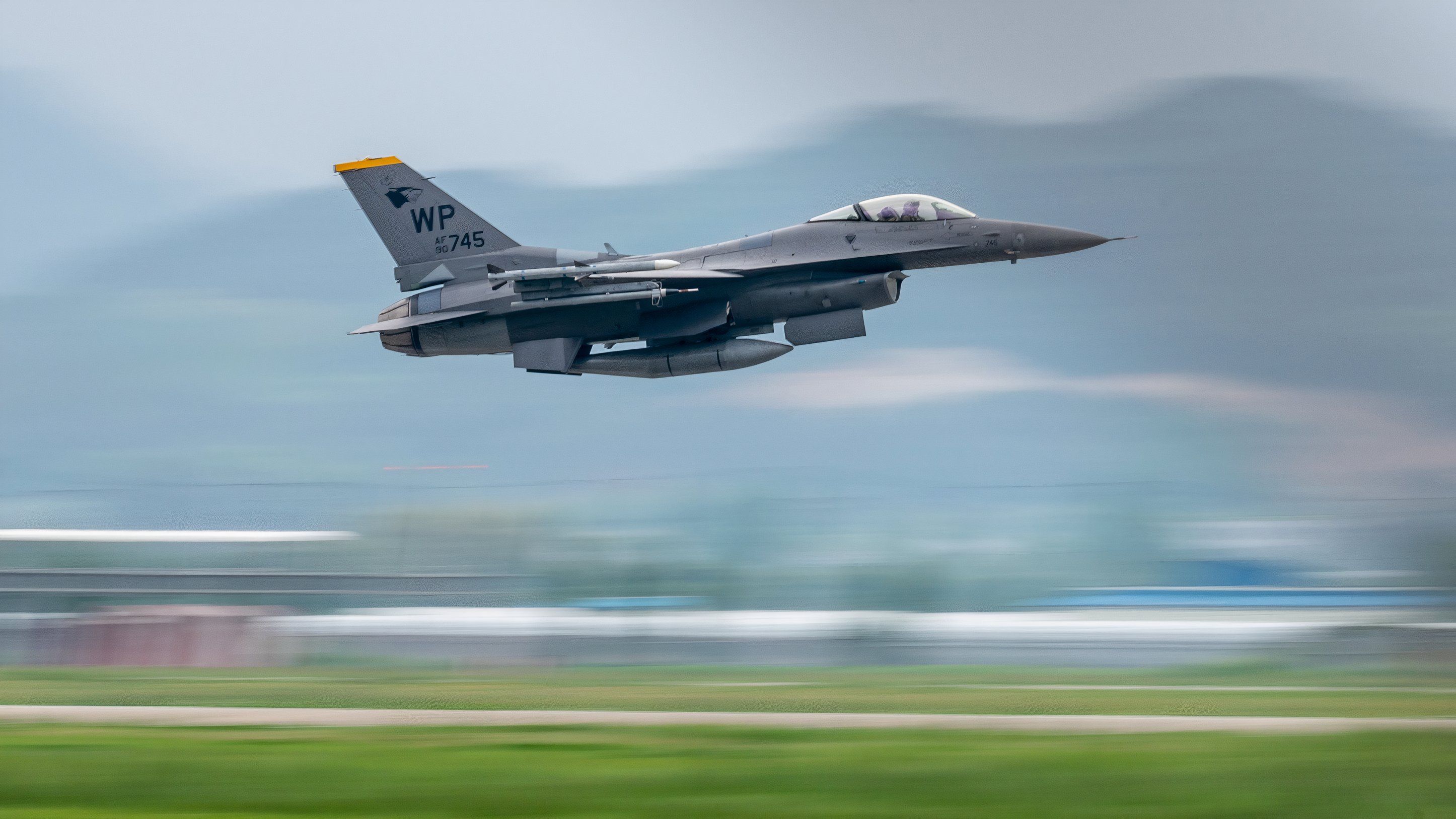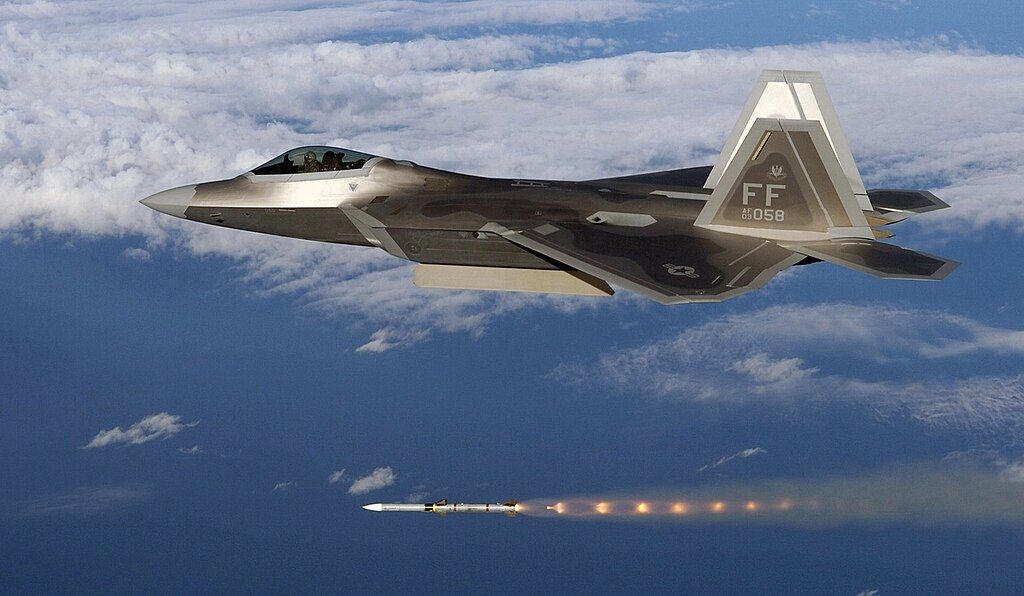Summary
- Korean War: New Soviet MiG-15s initially outperformed US fighters before the arrival of F-86 Sabres.
- Vietnam War: F-4 Phantoms claimed 150 MiG kills; US pilots didn’t capitalize on Phantom’s top speed.
- Operation Desert Storm: F-15s downed 32 Iraqi fixed-wing aircraft; F-15s were vital for USAF air-to-air kills.
The United States Air Force has been built to establish air superiority or air dominance over areas it finds itself operating. Today, the primary dedicated air superiority fighter jets operated by the Air Force are the F-15 (the newest being the F-15EX Strike Eagle II) and the F-22 Raptor. The F-22 Raptor is considered unrivaled in its role as an air dominance platform (even sixth-generation fighter, NGAD, may not be a replacement for it).
Korea War
An unknown number of MiG-15s were shot down by Sabres
|
Notable fighters: |
F-86 Sabre, others |
|---|---|
|
Opposing jets: |
notably MiG-15 |
|
Date: |
June 1950 to July 1953 |
The United States Air Force has not always enjoyed the massive technological advantage it does today. In the Korean War, new Soviet MiG-15s outperformed US legacy WWII fighters and older fighter jets. The MiG-15 used a reverse-engineered British Rolls-Royce engine (the British were early jet engine front runners).
The United States rushed its all-new F-86 Sabres to fight the MiG-15s, particularly over “MiG Alley”, which is the border between North Korea and China. The Chinese, Soviets, and North Koreans (all operating them) lost hundreds of MiG-15s, but it is difficult to know how many were shot down by Sabres.
Vietnam War
150 MiGs were claimed shot down by F-4 Phantoms
|
Notable fighters: |
F-4 Phantom, others |
|---|---|
|
Opposing jets: |
MiG-17, MiG-19, MiG-21 |
|
Date: |
November 1955 to April 1975 |
In the Vietnam War, the North Vietnamese extensively contested the skies in air-to-air combat. The then-new F-4 Phantoms were the USAF’s primary air superiority fighter during the war (they were also used by the Marines and Navy). At first, Phantoms fought North Vietnamese MiG-17s and, later, the more advanced MiG-21s.
Later analysis of the Phantom dogfights shows that US pilots never used the Phantom’s high speed (top speed Mach 2.2) in combat. Reasons include conserving fuel, being more maneuverable at slow speeds, and being unable to outrun a missile anyway. Since the Phantom, US fighter jets have gotten slower (the F-35 has a top speed of Mach 1.6).
Operation Desert Storm
F-15s shot down 32 fixed-wing Iraqi aircraft
|
Notable fighters: |
F-15 Eagle, F-16 Fighting Falcon, F-14 Tomcat, others |
|---|---|
|
Opposing fighter jets: |
MiG-29s, Mirage F-1s, Su-22, Su-25s, MiG-21s |
|
Date: |
August 1990 to Feburary 1991 |
In 1990, Saddam Hussein’s Iraq boasted an impressive air force mostly equipped with Soviet-origin fighter jets and some French jets. In Operation Desert Storm, the US Air Force was called up to establish air superiority over Iraq. By this time, American F-15 jets were much more capable than their Soviet counterparts, and there were no great air battles or dogfights.
Photo: USAF
Of Iraq’s 729 fixed-wing aircraft, 121 fled destruction to Iran. Another 254 Iraqi aircraft were destroyed on the ground. Only 37 Iraqi airplanes were shot out of the sky – including 32 fixed-wing aircraft and 5 helicopters. F-15s counted for all USAF air-to-air kills (except for two A-10s shooting down two helicopters). F-15s shot down eight MiG-23s, six F-1s jets, five MiG-29s, four SU-22s, two SU-25s, two MiG-25s, two MiG-21s, one PC-9, one IL-76, one SU-7, and five helicopters.
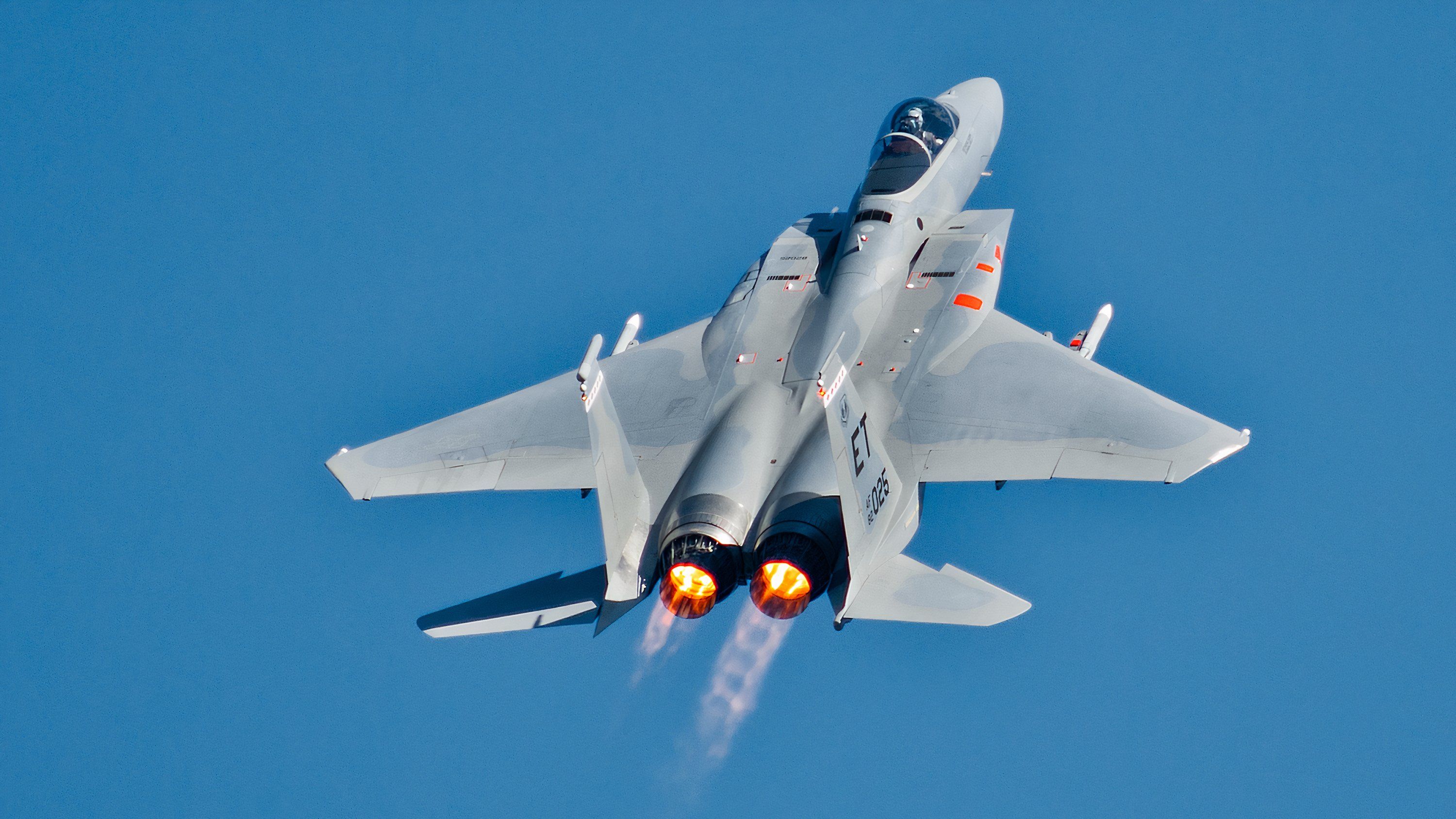
Related
Why Does Boeing Keep Improving The F-15 Instead Of Building A New Fighter Jet?
For many practical reasons, Boeing keeps updating the F-15 instead of starting from scratch with a new fighter jet. The F-15, which first flew in the 1970s, has proven to be versatile and reliable. Over the years, continuous improvements have been seen, leading to newer models like the F-15E Strike Eagle and F-15EX. These updates include cutting-edge technology like modern radar, sensors, and weapon systems while sticking with a tried-and-true airframe.
A big reason for this strategy is cost. Building a brand-new fighter jet from the ground up is super expensive and time-consuming. By upgrading the F-15, Boeing can use an existing design and just add the latest tech. This approach is way more budget-friendly, which is a big plus when defense budgets are tight.
Another reason is that the F-15’s track record makes it a great candidate for upgrades. Its design can handle new technologies, from advanced radar to better electronic warfare tools and weapons. This means the F-15 can stay ef
Operation Allied Force
F-16s and F-15s shot down several Serbian MiG-29s
|
Notable fighters: |
F-16 Fighting Falcon, F-15 Eagle, others |
|---|---|
|
Opposing fighter jets: |
MiG-29s |
|
Date: |
March 1999 to June 1999 |
The 1999 bombing of Yugoslavia (basically Serbia at that point) took place to stop the ethnic cleansing of Kosovar Albanians after the Albanians in Kosovo had declared independence following the break up of Yugoslavia. The first attacks started on the night of 24 March 1999, and the mission eventually used 250 US aircraft (including 120 land-based fighters – of which F-16s formed the backbone).
American F-15s shot down two Serbian MiG-29s on the first day, with a third the next day. During the 78-day campaign, NATO aircraft flew almost 38,004 sorties (of which 10,484 were strike sorties). In the end, Serbia agreed to withdraw, and Kosovo remains independent today. NATO lost an F-16 Fighting Falcon and a F-117 Nighthawk to enemy fire.
Operation Inherent Resolve
F-22 Raptors patroled the skies but did not shoot down enemy jets
|
Notable Fighters: |
F-22 Raptor, F-16, others |
|---|---|
|
Opposing fighter jets: |
None (ISIS) |
|
Date: |
2014 to present (peak in 2014-2017) |
The F-22 Raptor is widely seen as the most capable air superiority fighter in the world. And so no enemy aircraft dared to engage it, and so far, it has zone air-to-air kills (or one shootdown if the Chinese spy balloon in February 2023 is counted). The F-22 flew its first combat mission in 2014.
Operation Inherent Resolve is the US name for the international war against ISIS in Iraq and Syria (still ongoing). The campaign was mostly a joint Anglo-American campaign, with the US contributing 70% of the airstrikes and the UK 20%. According to the DoD, “As of Aug. 9, 2017, the Coalition has conducted 13,331 strikes in Iraq, and 11,235 strikes in Syria, for a total of 24,566 strikes total in support of Operation Inherent Resolve.”

